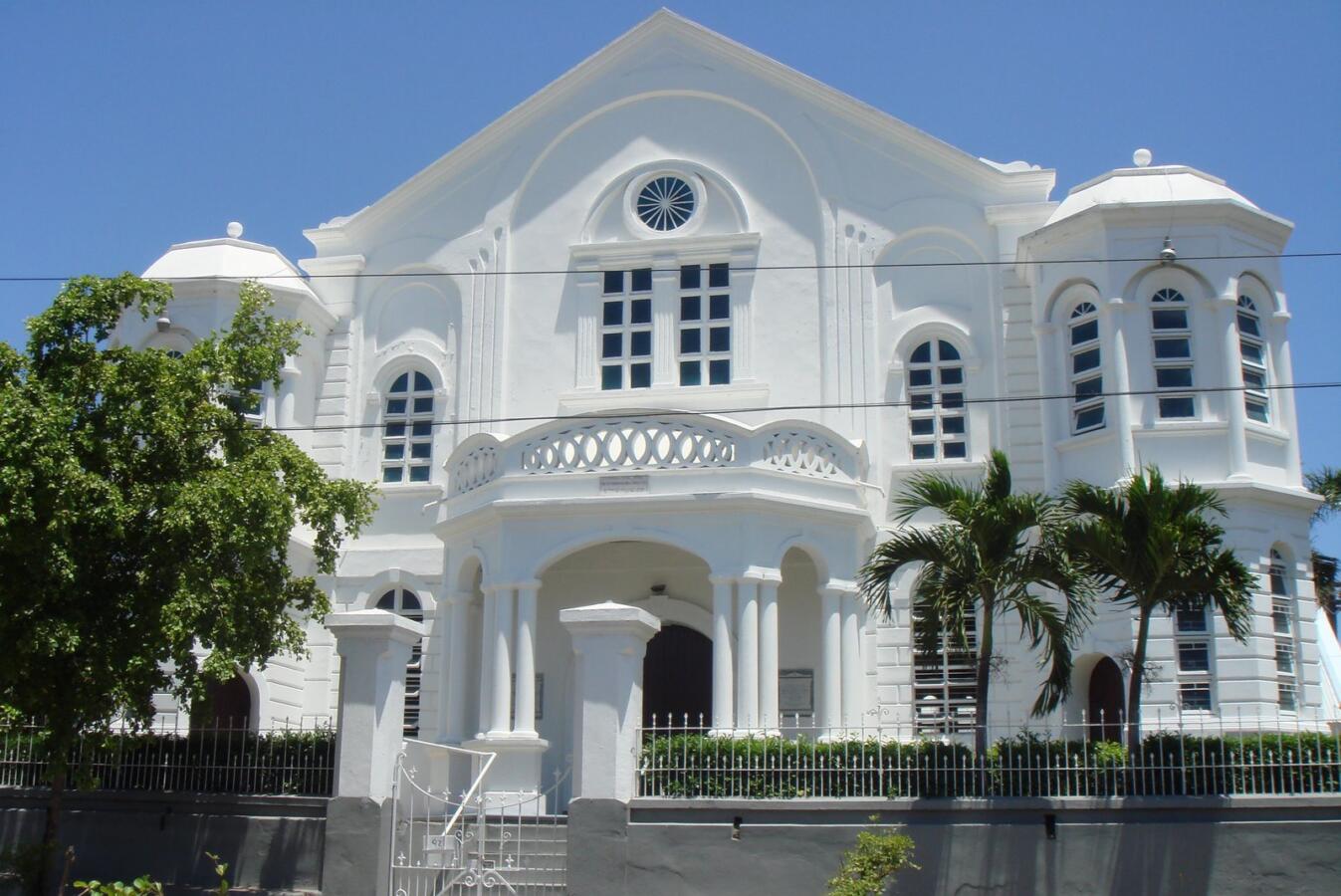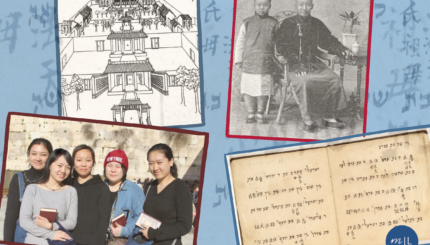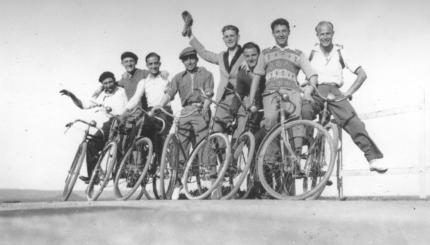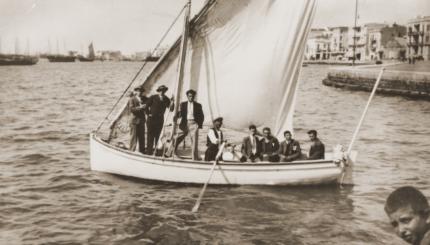The Jews of Jamaica make up a small but vibrant religious community centered today in the capital of Kingston. While the core of the community traces its ancestry to the Iberian peninsula, and the Jewish exodus that began in the late 15th century, Jamaican Jews today come from Poland, France, Italy, Africa, Israel, Turkey, and many other places. They have their own unique recipes for the most beloved traditional Jamaican dishes — including ackee and saltfish, fried bammy (a cassava flatbread), breadfruit, patties, potato pudding, dukono pastry and, of course, jerk chicken — and its main synagogue is one of only a handful in the world with a sand floor. While some 22,000 Jews once lived on the island, the Jewish population today numbers just about 450 people.
Many Jamaican Jews trace their origins to Portugal, where their ancestors were forcibly converted to Catholicism by King Manuel I in 1497. Although legally prohibited from emigrating, many still found ways to leave, moving to Spanish-Portuguese Jewish communities in Hamburg, London, Livorno (Italy), Amsterdam — and especially Bayonne, an the area of southwest France near the Iberian peninsula. Over the next 100 years, some of these former conversos (forced converts) came from Amsterdam to the Caribbean — including Jamaica, settling in Port Royal, Spanish Town, Montego Bay, and Kingston, as well numerous smaller towns throughout the island. Although Jamaica was then a Spanish colony, it was controlled by Christopher Columbus’ family, who refused to allow the Inquisition to establish a base on the island. Practicing Judaism was technically illegal, but there was no governmental mechanism for prosecuting suspected heretics.
After the British colonized Jamaica in 1655, another wave of Jewish immigrants arrived. Under the British, it became legal to practice Judaism, which in turn led to the establishment of the island’s first synagogue in Port Royal, a bustling commercial center known as a home base for pirates. Little is known about this synagogue, which was destroyed along with much of the city in an earthquake and tsunami in 1692.
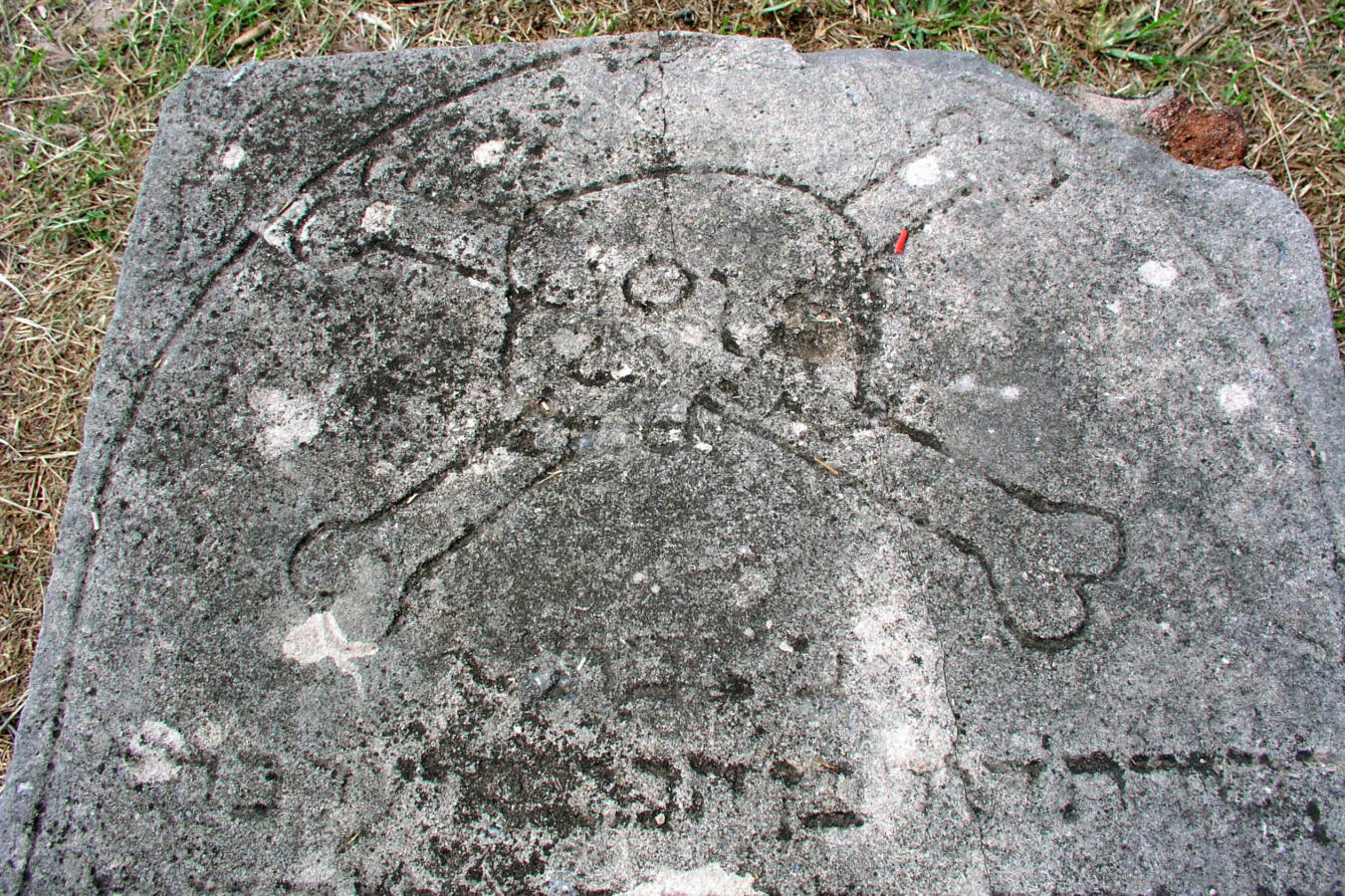
Just across the bay from Port Royal is the Hunt’s Bay Cemetery, the oldest Jewish burial ground in Jamaica. Seven graves in the cemetery bear the skull and crossbones, leading some to suggest that there were Jewish pirates looting Spanish ships. According to this theory, the Jewish pirates of Jamaica were Spanish and Portuguese Jews who fled the Inquisition and attacked Spanish shipping out of a desire for revenge. The Jewish pirate mentioned most frequently was Moses Cohen Henriques, who was able to steal shipments of gold and silver from Spanish boats off of the coast of what is today Cuba in 1628. Henriques also set up his own pirate Island off the coast of Brazil and worked with Captain Henry Morgan in Jamaica after 1654. But much of this history is undocumented and popular writers have exaggerated or invented much of the story.
The Jamaican Jewish community thrived during the 18th and early 19th centuries. Under British rule, Jews flourished by selling sugar, vanilla, tobacco, gold, rum, and other products. But by the early 20th century, the economy began a slow decline, and many Jamaican Jews emigrated to the United States, England and Australia. At the community’s peak in 1881, approximately 22,000 Jews lived among Jamaica’s 580,000 residents.
Today, there are an estimated 200-450 Jews in a total population of over 3 million, most of them concentrated in Kingston. For roughly a century since its establishment following a merger of two other communities in 1921, the Shaare Shalom Synagogue in downtown Kingston was the only functioning synagogue in the country. (Chabad opened a center in the tourist destination Montego Bay in 2014.) The synagogue property includes a Jewish heritage center and a memorial garden, whose relocated tombstones date back to the 18th century. The ark contains 13 Torah scrolls, many of them from other synagogues in Jamaica that closed or merged.
Shaare Shalom is one of only a handful of functioning synagogues in the world with sand floors, many of them in the Caribbean. Sand floor synagogues typically have a wood base covered in sand. Since a good deal of sand is lost through attrition, the supply requires replenishing every number of years.
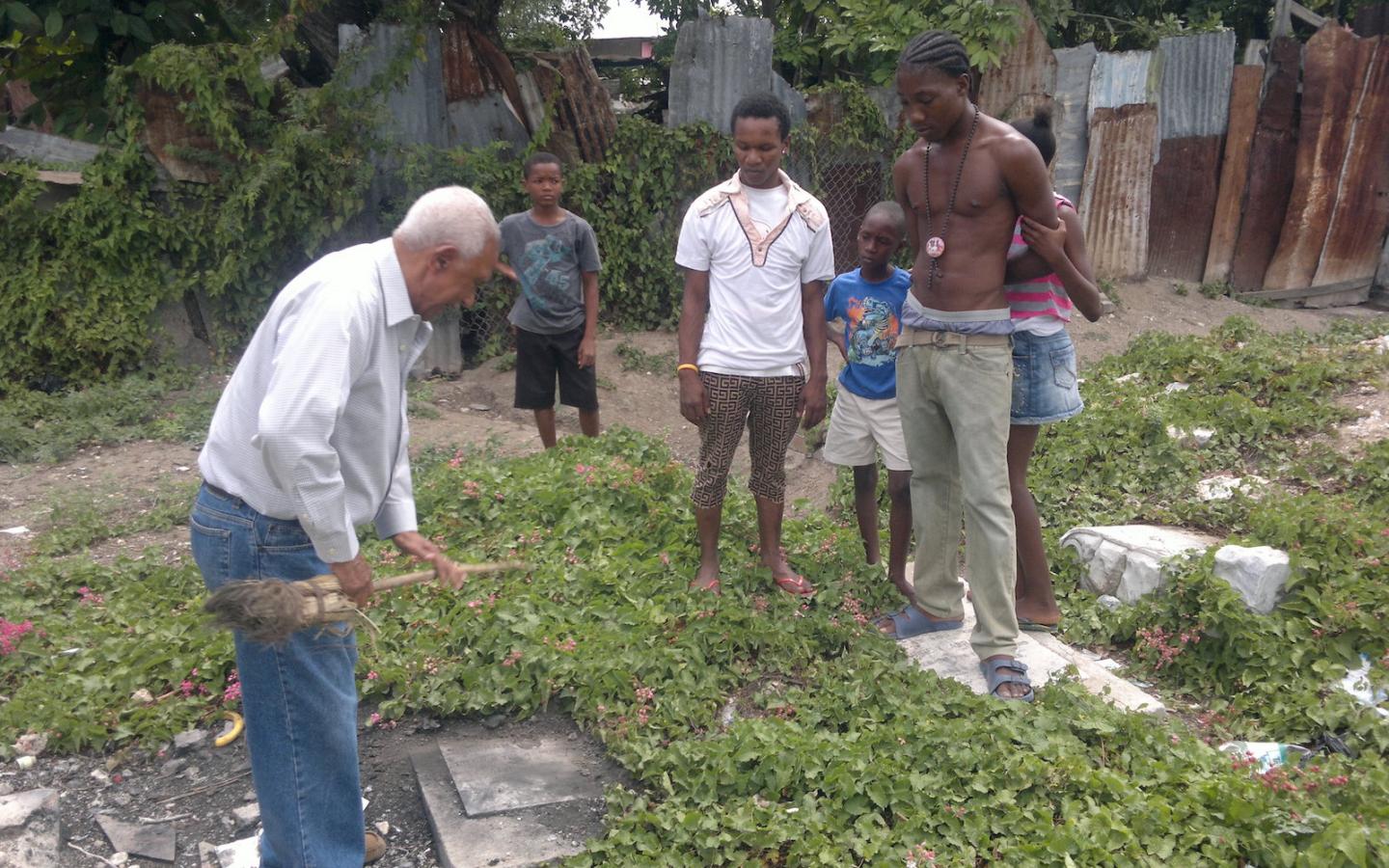
The origin of this practice is shrouded in mystery, with the explanations offered ranging from practical to historic to midrashic. The custom may have originated in Amsterdam, where sand was used to dry mud on people’s shoes. Others have suggested that sand symbolizes the terrain of the Sinai Desert through which the Israelites wandered for 40 years after the Exodus. Some also believe that sand symbolizes God’s promise to Abraham to make the Jews as populous as the sands of the sea. But the most common explanation is that the practice originated in the early 1600s in Brazil, where conversos who had returned to Judaism were trying to retain their ancestors’ traditions while subject to the hostile eyes of ecclesiastical authorities.
Many observers have commented on the similarities between Judaism and Rastafarianism, a religion that developed in Jamaica in the 1930s and was popularized by Bob Marley and reggae music. Some branches of Rastafarianism focus on the Hebrew Bible and emphasize themes of freedom and justice. The Rastafarians also believe that the Ethiopian emperor Haile Selassie was the messiah, based on his being a descendant of King Solomon. This explains the use of shared symbols common to both Judaism and Rastafarianism, including the Star of David and the Lion of Judah.
In 1969, the Jewish community established an international school called Hillel Academy as a way to stop fighting among local Jewish leaders. The academy is considered among the best in the country and is Jamaica’s largest international school, with 700 students from over 40 countries.
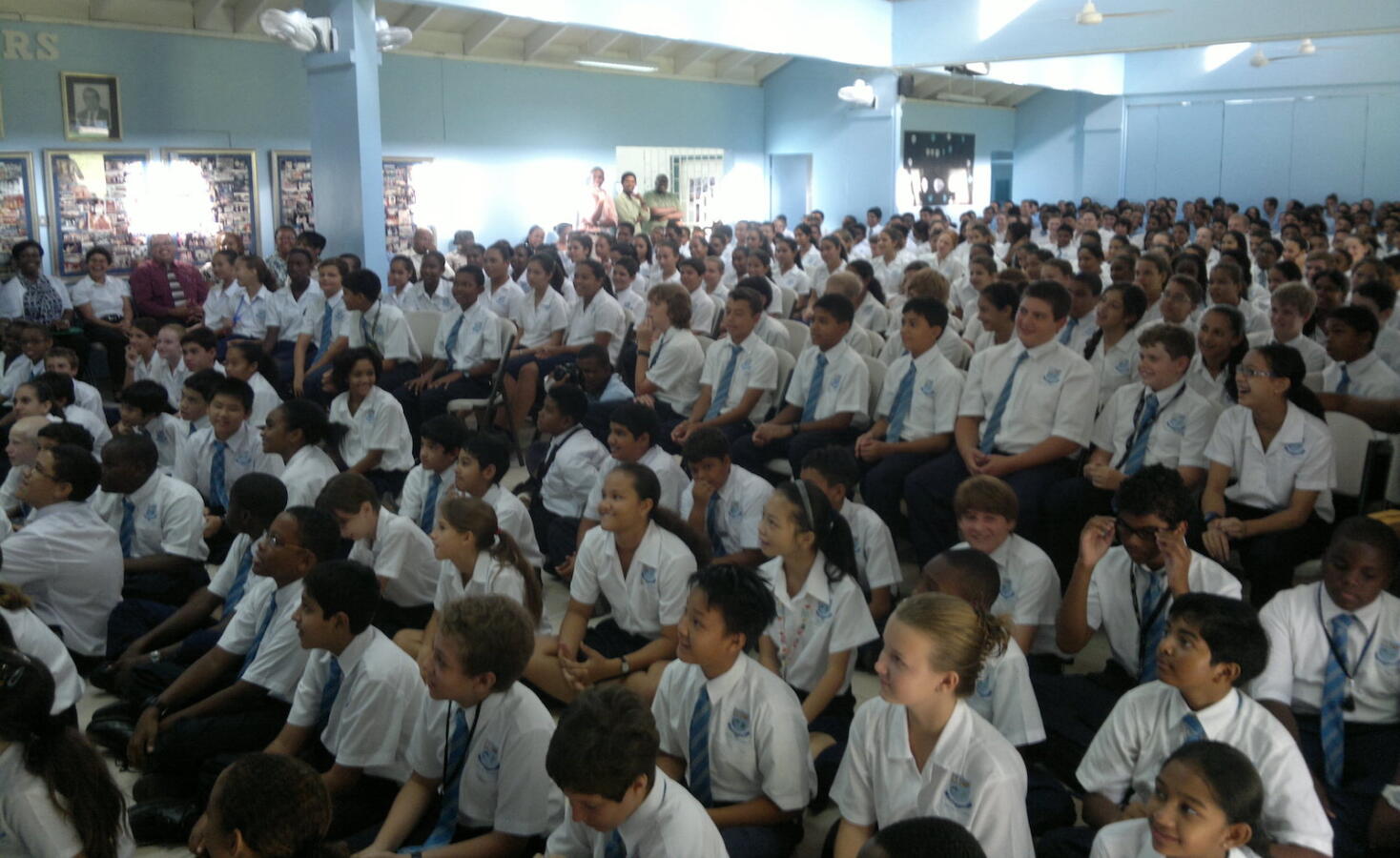
Several Jamaican Jews rose to political prominence in the mid-20th century. Neville Ashenheim served as the first ambassador to the United States after Jamaica won its independence from Britain in 1962, serving in the post until 1967. (Ashenheim’s great-grandfather, Lewis Ashenheim, was the editor of the first Jewish newspaper in the West Indies.) Mayer Matalon was one of the most important advisors to the Jamaican government in the 1970s and owned many businesses, especially in construction. Matalon’s brother, Eli Matalon, served in several government posts, including mayor of Kingston, minister of education, and minister of national security and justice.
But the 1970s saw a particularly drastic exodus of Jamaican Jews after then Prime Minister Michael Manley — seen by some as a leader in the style of Fidel Castro — moved the country toward socialism and flirted with revolution. Under Manley’s rule, much of the Jamaican elite left the country. When the 1980 election brought Edward Seaga to power, significant numbers of those elites returned. But many others did not, including many of the leaders of the Jewish community. Though the community today is but a fraction of its former size, its impact on Jamaica endures.
